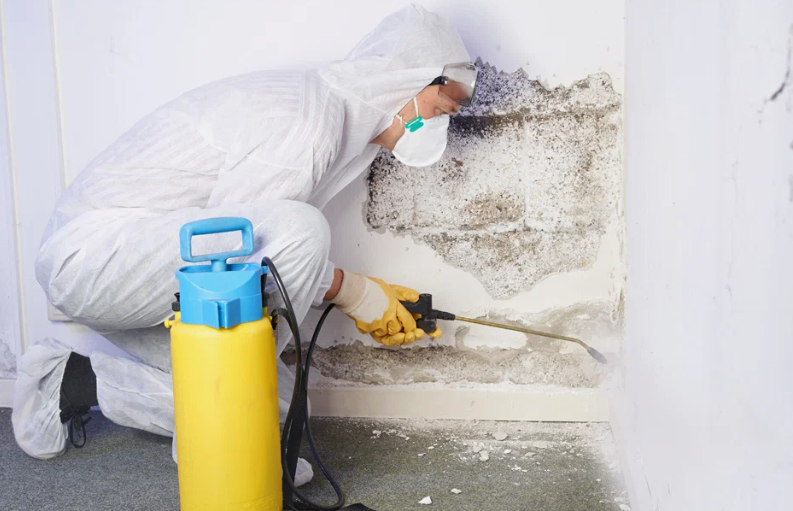Mold infestation is a common problem for many homeowners, especially in areas that are humid or prone to water damage. Whether it’s hidden behind the walls or spreading in visible corners, mold growth not only damages your property but can also pose serious health risks. That’s why mold remediation is so important to ensure your home stays safe and healthy. However, many people often make critical mistakes during the process, which can lead to ineffective results, worsening the issue, or even damaging your property further.
In this article, we will explore 5 common mistakes people make during mold remediation and how you can avoid them, helping you achieve long-lasting solutions and a healthier living environment. Let’s dive in!
1. Failing to Properly Identify the Source of Moisture
The first and most crucial step in mold remediation is identifying the source of the moisture causing the mold growth. Mold thrives in damp, humid conditions, so unless the source of the moisture is addressed, the mold will likely return, no matter how many times you clean it.
Mistake:
Many homeowners assume that simply cleaning the visible mold will solve the problem. However, if they don’t find the source of moisture, the mold is likely to come back even after cleanup.
How to Avoid It:
Work with an experienced mold remediation specialist, like Spartan Water Restoration, to inspect your property thoroughly. Professionals use advanced equipment, such as moisture meters and infrared cameras, to detect hidden moisture. Common sources of moisture can include leaky roofs, plumbing issues, poor drainage, or even high humidity in certain areas like bathrooms or basements.
By identifying and fixing the underlying issue, you can ensure that the mold doesn’t return, saving you money and effort in the long run.
2. Not Using Proper Protective Equipment
Mold spores are hazardous to your health, so proper personal protective equipment (PPE) is essential when handling mold remediation. People often overlook this crucial step or use inadequate protective gear when attempting to remove mold themselves.
Mistake:
Without PPE, individuals risk exposure to harmful mold spores, which can cause respiratory issues, skin irritation, and other health problems, particularly in sensitive individuals like children or people with allergies. In some cases, direct exposure to mold spores can even lead to more serious long-term health complications.
How to Avoid It:
Make sure that anyone involved in the remediation process wears protective equipment such as:
- N95 respirators or higher-quality masks
- Disposable gloves
- Protective eyewear
- Coveralls or old clothing
- Shoe covers
If you don’t have the proper gear, it’s best to hire professionals from a trusted restoration company, such as Spartan Water Restoration, who are trained in safe mold remediation and understand how to minimize health risks while doing the job.
3. Not Containing the Area and Spreading Mold Spores
Mold can easily spread to other areas of your home if it isn’t contained properly during remediation. When mold spores are disturbed, they can quickly travel through the air, which means you could be making the problem worse and contaminating other areas of your home unintentionally.
Mistake:
A common mistake is failing to create proper barriers around the affected area. When this happens, the mold spores can easily circulate to other rooms, increasing the spread of the infestation. This often happens when DIYers clean mold without containment or use ineffective methods to seal off the area.
How to Avoid It:
To avoid spreading mold spores, professionals use containment methods such as plastic sheets, tape, and negative air pressure systems. By creating a controlled environment, they ensure that mold spores are confined to the affected area, minimizing the risk of cross-contamination.
Before beginning the remediation process, ensure that the area is sealed off and that air vents and windows are closed to prevent mold from traveling. Additionally, a HEPA filter is essential for air filtration, especially if the mold infestation is widespread.
4. Using the Wrong Cleaning Solutions
One of the key components of mold remediation is cleaning the affected areas. However, many homeowners attempt to use off-the-shelf cleaning products that are ineffective at truly removing the mold.
Mistake:
Not all cleaning products are capable of killing mold or effectively removing mold spores. Some over-the-counter products may merely clean the surface without addressing the underlying problem or eliminating all the mold spores, which means the mold will likely return.
How to Avoid It:
When remediating mold, it is important to use products specifically designed for mold removal. A professional mold remediation service, such as Spartan Water Restoration, will use industrial-grade cleaning products that are proven to kill mold and prevent its regrowth.
For example, specialized anti-fungal treatments and mold-killing solutions are applied during the remediation process. These treatments not only kill the mold but also help to sanitize the affected areas, preventing mold from returning.
5. Not Addressing Moldy Materials Properly
Some materials, such as drywall, carpets, or insulation, are porous and can absorb moisture. Unfortunately, these materials can also absorb mold spores, making it difficult (if not impossible) to remove the mold completely. In such cases, it’s best to remove and replace these materials rather than attempt a partial clean-up.
Mistake:
Many people don’t replace mold-damaged materials, thinking they can be saved. While cleaning may remove surface-level mold, it won’t address the spores embedded deep inside the material, which can lead to recurring mold growth. This is a costly mistake and often results in the mold reappearing within weeks or months.
How to Avoid It:
When the damage is extensive, make sure to remove and replace affected materials that cannot be effectively cleaned. For example, replacing mold-infested drywall, flooring, or insulation can significantly reduce the risk of the mold returning.
It is important that you don’t try to save materials that are severely compromised. A trusted restoration company like Spartan Water Restoration can help guide you through this process, safely removing contaminated materials and replacing them with fresh, unaffected materials.
Conclusion
Mold remediation can be a complex and challenging task. But by avoiding the common mistakes discussed above, you can ensure a safer, more effective process that will keep your home free from mold for good. Always remember the key to effective remediation lies in properly identifying moisture sources, using the right equipment, and ensuring the work is done thoroughly and safely.
If you need assistance with mold remediation, it’s always a good idea to contact professionals who can handle the job. Spartan Water Restoration offers expert mold remediation services, ensuring your home stays dry and mold-free.
FAQs
1. Can I remove mold myself? While small amounts of mold can be handled safely by homeowners with proper equipment, large infestations or mold in hidden areas (like behind walls) should be handled by professionals. Mold removal requires specialized training and tools, so if in doubt, it’s safer to consult a mold remediation expert.
2. How long does mold remediation take? The duration of mold remediation depends on the extent of the infestation and the size of the affected area. Typically, a professional mold remediation process may take anywhere from a few hours to several days, depending on the damage.
3. Can I prevent mold from growing again? Yes! After mold remediation, keeping moisture levels in check is crucial to preventing mold from returning. You should address any leaks, ensure your home is well-ventilated, and use a dehumidifier if necessary. Regular maintenance and keeping an eye out for signs of mold can help keep your space safe and healthy.



